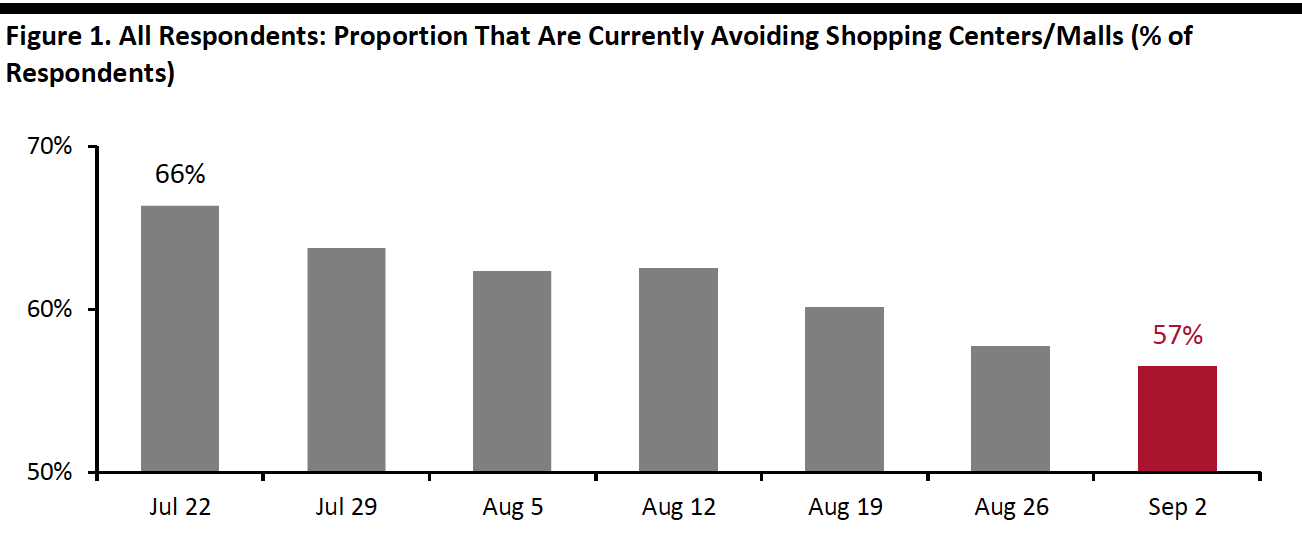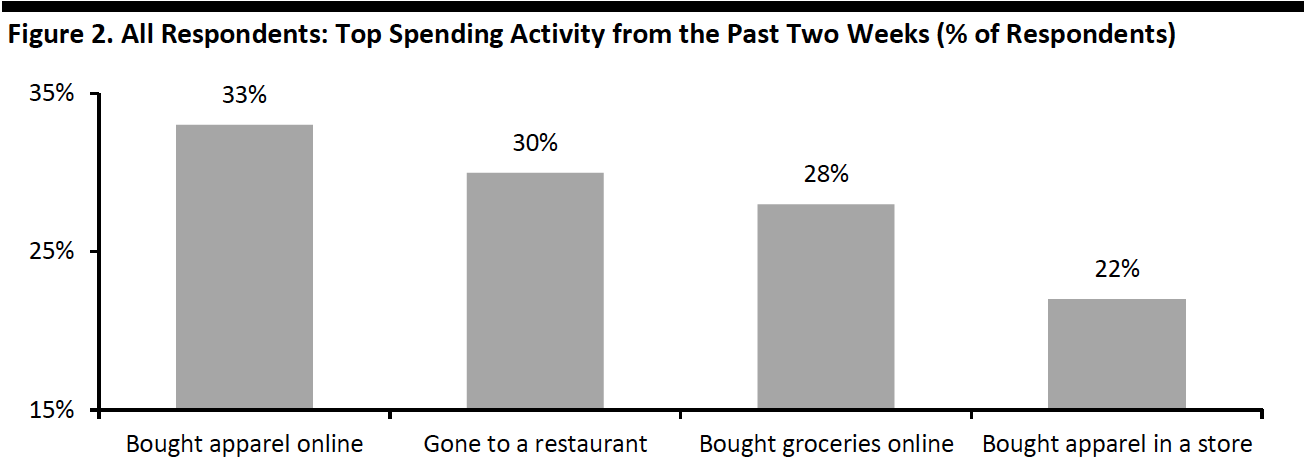
albert Chan
We discuss select findings and compare them to those from prior weeks: August 26, August 19, August 12, August 5, July 29, July 22, July 15, July 8, July 1, June 24, June 17, June 10, June 3, May 27, May 20, May 13, May 6, April 29, April 22, April 15, April 8, April 1, March 25 and March 17–18.
1. Shopping Center Avoidance Shows a Gradual Declining TrendOur regular weekly question found that the proportion of respondents that reported that they are avoiding any public area was broadly level with the previous week—at around 80%. However, we saw a slight decrease in avoidance rates for seven of the 12 options we provided.
- The proportion of respondents that are currently avoiding shopping centers/malls fell for the third consecutive week to 57%. Encouragingly, the avoidance rate for malls has dropped roughly 10 percentage points from the peak of two-thirds on July 22. The rate this week is also the lowest level that we have seen since July.
- The proportion of respondents that are currently avoiding food-service locations bounced back slightly, after declining last week to the lowest level in months. Some 54% are currently avoiding restaurants, bars and coffee shops, versus 58% last week. This rate is still considered low, compared to the level in July and the beginning of August.
 Base: US Internet users aged 18+
Base: US Internet users aged 18+Source: Coresight Research[/caption] 2. Online Grocery Shopping Tapers Off This Week
Each week, we ask consumers what they have done in the past two weeks, with this week’s survey showing that online grocery shopping has tapered off after reaching a peak in recent weeks. The proportion of respondents that had bought groceries online dropped six percentage points to 28% this week. After taking the number-one spot as the most popular spending activity for the past three weeks, this decline shifted online grocery shopping down to third place.
This is aligned with the results from a separate question on how consumers’ online shopping habits have been impacted by Covid-19, which showed that online food purchases declined slightly this week—some 22% are currently buying more food online than before the crisis, versus one-quarter last week. One-third of respondents had bought apparel online in the past two weeks, consistent with the average level we saw in July and August. This compares to the 22% of consumers that had bought apparel in a store.
- See our full report for complete results on consumers’ activities in the past two weeks and what categories are the most popular for online purchases.
 Base: US Internet users aged 18+
Base: US Internet users aged 18+Source: Coresight Research[/caption] 3. Discretionary Purchases Pick Up
This week, we saw a week-over-week fall in the proportion of respondents that are currently buying more and buying less across any category. The decline in consumers buying more was driven by fewer purchases in essentials, including household products, food and personal care.
Apparel remains the most slashed category, but it has seen a slight decline in the number of shoppers making fewer purchases and a gradual increase in the proportion saying that they are currently making more apparel purchases. This resulted in a lower ratio of respondents purchasing less apparel to those purchasing more—2.7 this week, versus 3.2 last week and 4.4 two weeks before. In addition, the proportions of respondents buying less in beauty and home categories both fell to the lowest levels since we started asking this question in our survey.
[caption id="attachment_115867" align="aligncenter" width="700"] *Buying more of certain categories and buying less of certain categories were not mutually exclusive options; respondents could answer yes to both
*Buying more of certain categories and buying less of certain categories were not mutually exclusive options; respondents could answer yes to bothBase: US Internet users aged 18+
Source: Coresight Research[/caption]